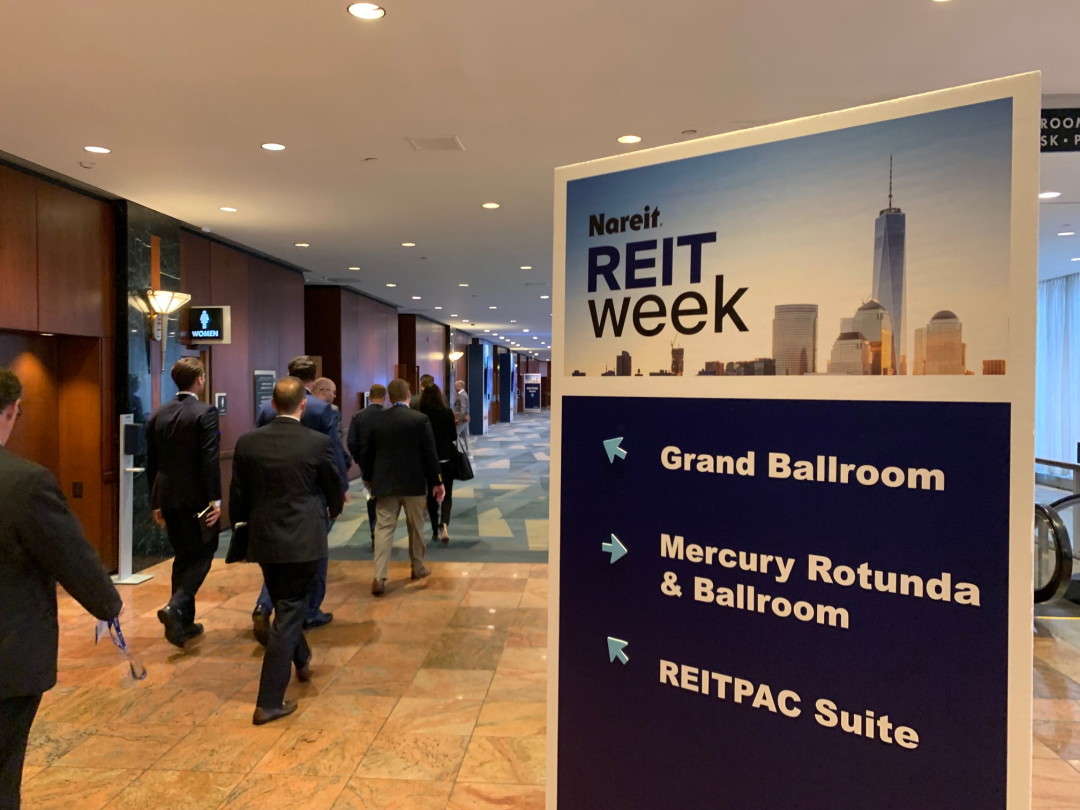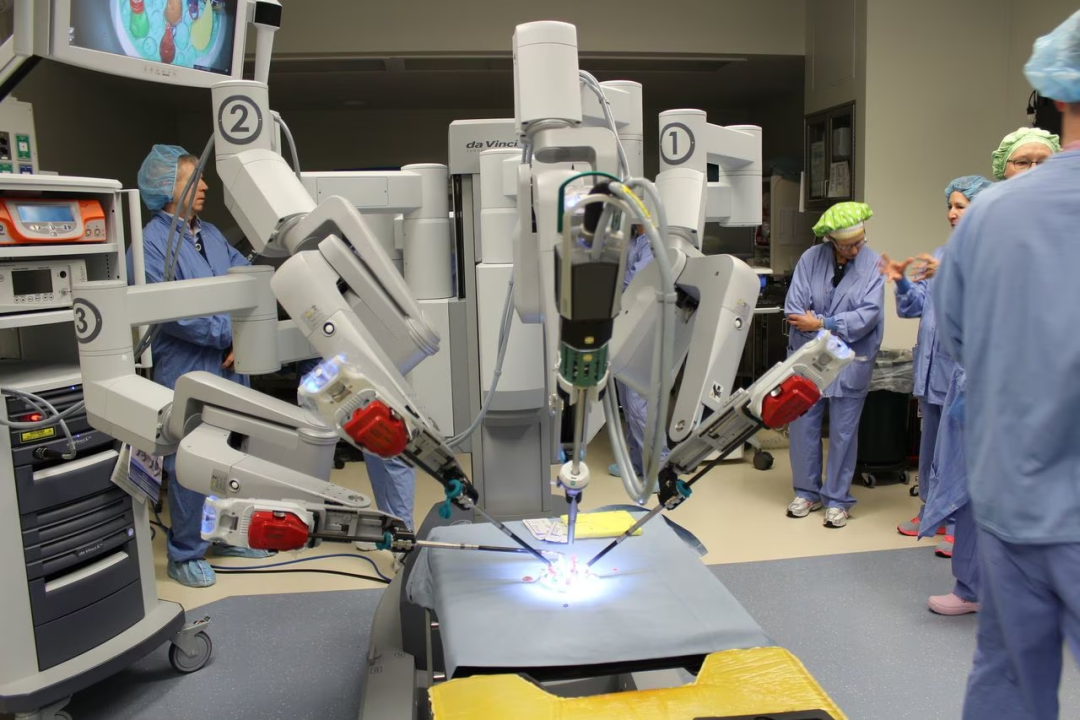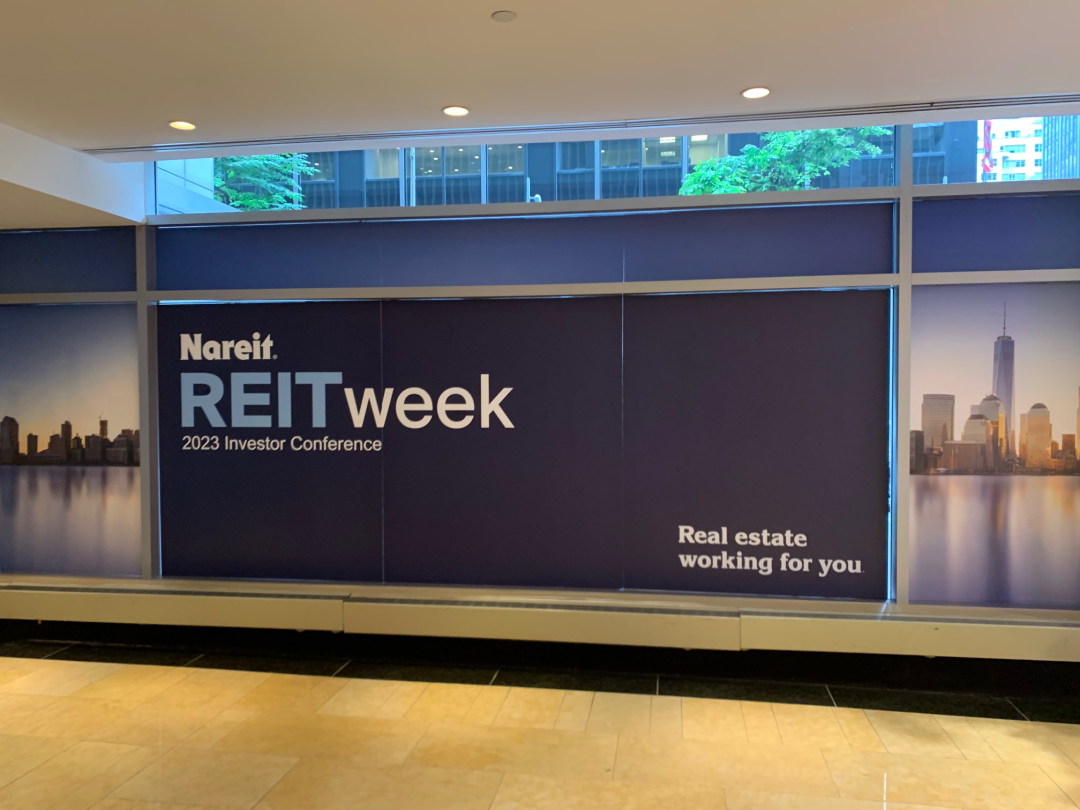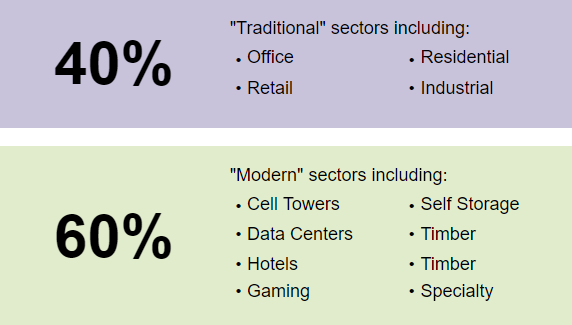The first week of June is the National Real Estate Week, and Huisheng Financial was invited to participate in the National REIT Conference again.
More than 300 REITs (Real Estate Trust Funds) and leading companies covering various subdivisions of the global real estate industry came to participate in the conference.
The National REIT Association was born in September 1960, when US President Eisenhower signed a decree establishing the real estate trust fund industry. The day after he signed the law, the National REIT Association was established in Washington and began its annual meeting in New York.
This meeting should be the 63rd annual meeting, comparable to the history of Mr. Buffett's Berkshire Hathaway shareholder meeting. Of course, unlike the general meeting of shareholders, which is free for shareholders to attend, this year’s REIT general meeting tickets are much more expensive than in previous years. Unless they are professional investors and sponsors, a ticket is 3,500 US dollars. Hope to be able to share a lot of interesting information learned at this conference.

1. The current grim situation in the real estate market
It can be said that the real estate industry in the United States and the world is currently facing severe challenges. The executives of major real estate companies who shared on the spot basically said the same theme: rising interest rates and reducing leverage.
At the beginning of last year, the federal funds rate in the United States was still zero, and the real estate fund borrowing rate was 3-4%. In the past year or so, the Federal Reserve has raised interest rates 10 times, the most violent rate hike in history. The federal funds rate has reached more than 5%, and the borrowing rate of real estate companies has reached about 10%.
These are very difficult times for many real estate companies. The rental yield of many properties is 4-7%, barely covering interest costs. Some of the more aggressive real estate firms have disappeared from the convention. Many companies are being forced to sell real estate to stop losses. For example, office buildings in San Francisco have recently been sold at a 2-3% discount. The owners of the Union Square Hotel, San Francisco's largest hotel with more than 1,100 rooms, just defaulted and were taken over by banks. American companies that are still operating real estate are reducing borrowing, repaying high-interest loans, and waiting for the bottom of the economic downturn.
2. Transformation from traditional real estate to modern real estate
The biggest feeling of this meeting is that "traditional" real estate is constantly being eliminated, and "modern" real estate is replacing traditional real estate. The definition of traditional real estate in the United States includes four categories: office buildings, residential buildings, retail, and industrial properties. A latest statistical data shows that the proportion of traditional American real estate in the national real estate has dropped to 40%. The proportion of "modern" real estate has risen to 60%. The subdivision of modern real estate includes the following: cell phone towers, data centers, logistics centers, hotels, casinos, personal storage, forests, medical institutions, prisons, etc.
What's more, the occupancy rate of traditional real estate is much lower than that of modern real estate. Of course, new capital investment also prefers to invest in modern real estate. Huisheng Financial Inc focused on investing in US medical real estate seven years ago, avoiding traditional real estate, which can be said to have occupied the commanding heights for investors.
3. Migration to the south
Another common theme at real estate conferences is southward migration. U.S. real estate developers are migrating south from Democratic-controlled northern states to Republican-controlled southern states.
The CEO of a real estate company said that he has been in this industry for more than 30 years, and the trend has always been to move south. However, the pace of southward migration has accelerated in recent years. In the past, he had seen a lot of white-collar industries moving south, but after the epidemic, it was more obvious that the American manufacturing industry moved south. Including $Boeing(BA)$ moving its aircraft production line from Democratic-controlled Seattle to South Carolina, including $Caterpillar(CAT)$ moving its tractor production line from southern Illinois to Texas. Of course, the southward relocation of manufacturing giants such as $Tesla Motors(TSLA)$ , $Toyota Motor Corp.(TOYOF)$ , and $Honeywell(HON)$ is also well known. Another real estate company announced that they would sell all their properties in Pittsburgh, and then concentrate their investment in Tennessee, North Carolina, Texas, etc. He said the main reason is that the investment promotion offices in the southern states of the United States are very active and very cooperative with them in attracting new tenants.
4. Artificial intelligence and medical real estate
Huisheng Financial, have been working on American medical real estate for a long time, especially in North Carolina and South Carolina. So at this conference, I am very happy to hear that the topics discussed by several of the largest medical institutional investors in the United States are exactly the same as ours.
One of the largest medical investment institutions in the United States stated that "the future of American medical care lies in outpatient clinics." He said that large inpatient medical centers will gradually decline and close down, and decentralized professional outpatient clinics, ambulatory surgery centers and small hospitals will become the mainstream. That is to say, the "Starbucks-style clinic" that Huisheng Finance has always proposed is the future of hospitals.
In the future, primary health care in the United States will be provided by retailers such as $Wal-Mart(WMT)$ and $Amazon.com(AMZN)$ . Professional outpatient clinics will provide treatments for skin diseases, cancer, surgery, pediatrics, and cardiovascular departments. Large medical centers will close down. Reminiscent of the same in the future in China, there is really no need for the tertiary hospitals in many cities to continue to exist in the future.

Of course, to achieve a Starbucks-style specialist chain, standardized treatment is essential. This involves artificial intelligence. At present, a large number of advanced medical images can be realized remotely, and operations can also be performed by robots similar to Da Vinci. The biggest advantage of artificial intelligence is that it does not require a lot of space. Some organizations have proposed that the core hospital in American society may be a standardized size of about 100,000 square feet (10,000 square meters) to deal with extremely complex diseases. And 99% of the population will be covered by the so-called Wal-Mart and other specialized clinics within a distance of 10 miles to provide precise care for patients.
The data shows that investment in traditional hospitals in the United States is now sunset, and 64% of investment in medical real estate is already in the specialty chain Starbucks-style medical services. After the new crown epidemic, a large number of patients in the United States are not willing to go to the so-called large medical centers in the medical city to see a doctor, and would rather go to a specialized clinic near their home. However, the operating costs of large-scale medical cities are extremely high, and it is difficult to recruit employees, resulting in a decline in quality and facing a vicious circle.
5. The future of office buildings
At this meeting, the CEO of the largest office building REIT company in the United States from California made a market analysis on office buildings. He first stated that working from home is a long-term trend. Many companies will let employees work from home for a long time, or go to the office two or three days a week. Therefore, the current office vacancy rate in New York, California and other places is 50%-70%, which may be difficult to reduce a lot. At the same time, in a city like San Francisco, there is still a serious crime rate problem, and there is no short-term solution, unless it is relocated to a red state such as Florida or Texas.
However, the demand for high-end office buildings will still be strong. Large and small companies still need to rent office buildings with many modern facilities. So their solution is to keep building new offices (average property holding age is only 11 years). Old buildings continue to sell, and even give up directly in breach of contract. He believes that many large old office buildings in California and downtown New York may end up being abandoned and demolished.

6. Views on the global real estate market
There were also many real estate companies from countries other than the United States at this meeting. What is more interesting is that the executives of these companies shared that global inflation is very serious now. But their business in the US is better than in Europe and Asia. The reason is the strong appreciation of the U.S. dollar, while the currencies of European and Asian countries have depreciated severely.
Therefore, for real estate companies, although rents have risen, it is too late to cope with the rapidly rising costs. In particular, the lease is often a multi-year contract, and it is difficult to quickly increase the rent to cope with the severe inflation last year. The result is that companies investing in real estate in Europe and Asia cannot truly hedge against inflation.

7. The impact of inflation
Real estate has traditionally been considered an asset that can protect against inflation. But this time, inflation has risen sharply, and real estate prices have plummeted, which can be said to have dealt a huge blow to this belief. At the conference, many institutions said that due to the soaring interest rates, even in the case of high inflation, the market value of real estate is declining rapidly. In addition, the maintenance and management of real estate requires a lot of labor. In the case of high inflation, labor costs have soared, and there is a shortage of labor. It is difficult to recruit employees in the United States and Europe. As a result, many properties cannot operate normally, and the return on capital is also affected.
There were also large senior care real estate companies to share at the meeting. They also said that inflation has a huge negative impact on them. The reason is that retirement real estate requires a lot of investment, including nursing staff, property maintenance, etc. The income of senior care properties is fixed, but the cost is rising rapidly, and the turnover of nursing staff is very high. It is difficult to recruit employees immediately after resignation, which is also a headache for senior care institutions.
8. Silicon Valley Bank and the impact of the banking crisis on the real estate market
The collapse of Silicon Valley Bank in the first quarter of this year triggered a cascade of problems for regional U.S. banks, including the closure of several regional banks. U.S. regional banks are also major lenders in the traditional real estate market. Their plight is also having a negative impact on real estate companies. Silicon Valley Bank supports a large number of innovative start-ups in Silicon Valley, especially many biotechnology companies. As a result, many biotech companies located in California have also become bad tenants for real estate companies.
At the conference, some real estate companies said that after this incident, a major lesson learned is the need to pay attention to the financial situation of tenants. For example, many companies were willing to rent houses to Silicon Valley Bank customers in the past, and many of them may be companies that are losing money and burning money. From now on, they will require tenants to provide regular financial statements, and at the same time observe the tenant's personnel exchanges to ensure early warning before tenants have financial problems.
And real estate companies are also re-planning their financial situation, such as borrowing more long-term debt, repaying short-term bonds, and reducing the company's overall leverage ratio. And began to do some "leverage-neutral" management, that is, to incorporate equity investment while borrowing new debt, and increase assets by increasing equity and debt in proportion to ensure that the debt ratio decreases.

9. Outlook of the Market
Many real estate companies have indicated that the current global real estate market is on the eve of a major change. Due to soaring interest rates, the value of many properties should theoretically drop a lot. However, many owners refused to significantly reduce prices, so the current real estate transaction volume has actually declined. Some radical owners were unable to pay the loan interest, so the building defaulted and was repossessed by the bank. The properties are closing, but very slowly, requiring a long legal process.
With landlords short on money, many properties are not being well maintained, and the result is disgruntled tenants. Some tenants prefer to pay higher rents and move to well-maintained properties. And some powerful real estate companies are investing heavily to upgrade property management, which can be said to have formed a virtuous circle. Some CEOs of real estate companies said that as the economic downturn begins, 2024 may be a year of full clearance. Many properties will be forced to sell, some buildings will be demolished, and the prices of the remaining high-end properties will rise retrogradely.
It can be said that our biggest feeling at the conference is that modern real estate such as data centers and medical centers leads the trend. It is difficult for traditional investors who invest in office buildings and residential buildings to continue. It is an unavoidable trend to let artificial intelligence intervene in investment in the real estate market through transformation and upgrading.


Comments
这篇文章不错,转发给大家看看
Great ariticle, would you like to share it?